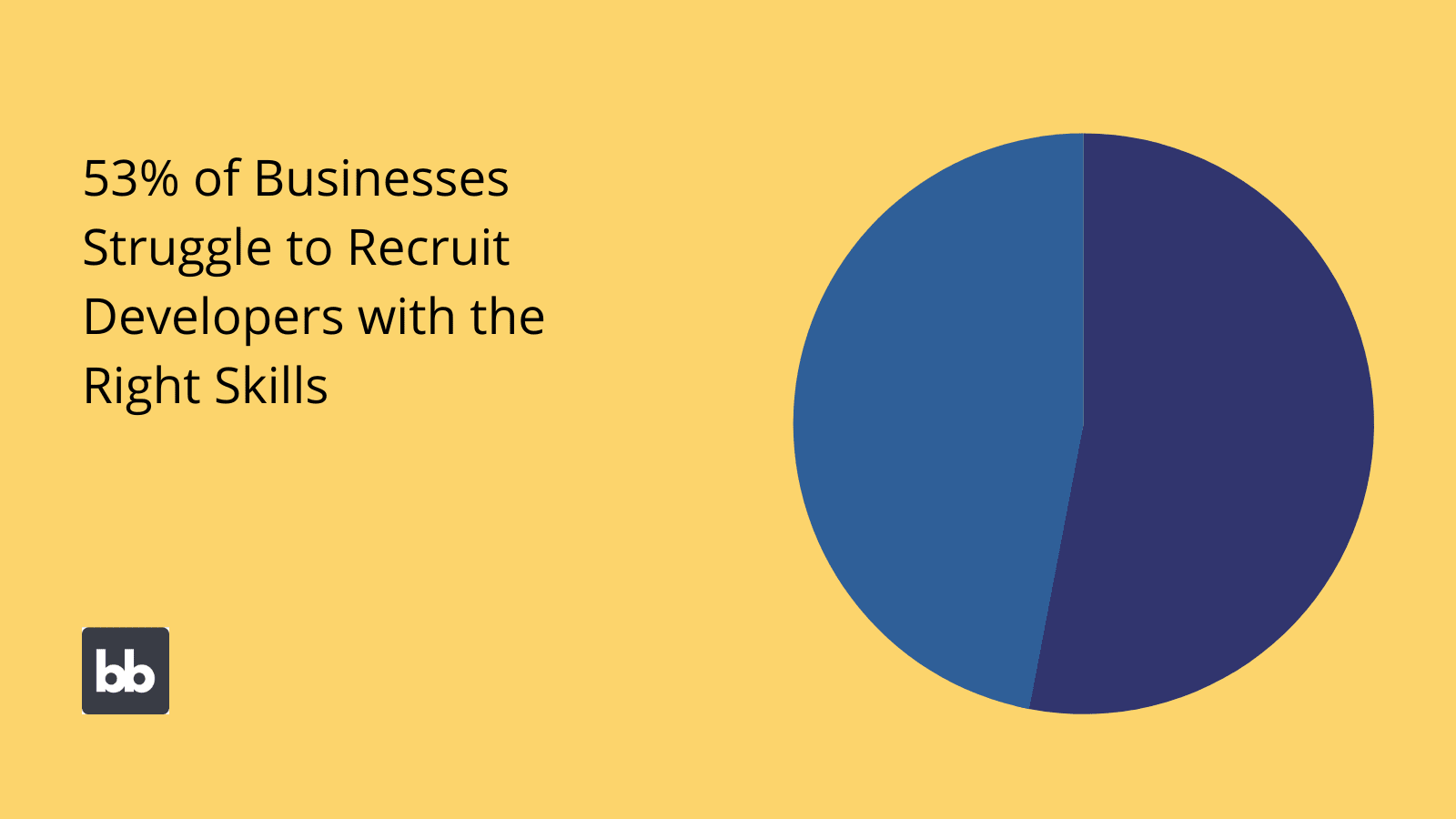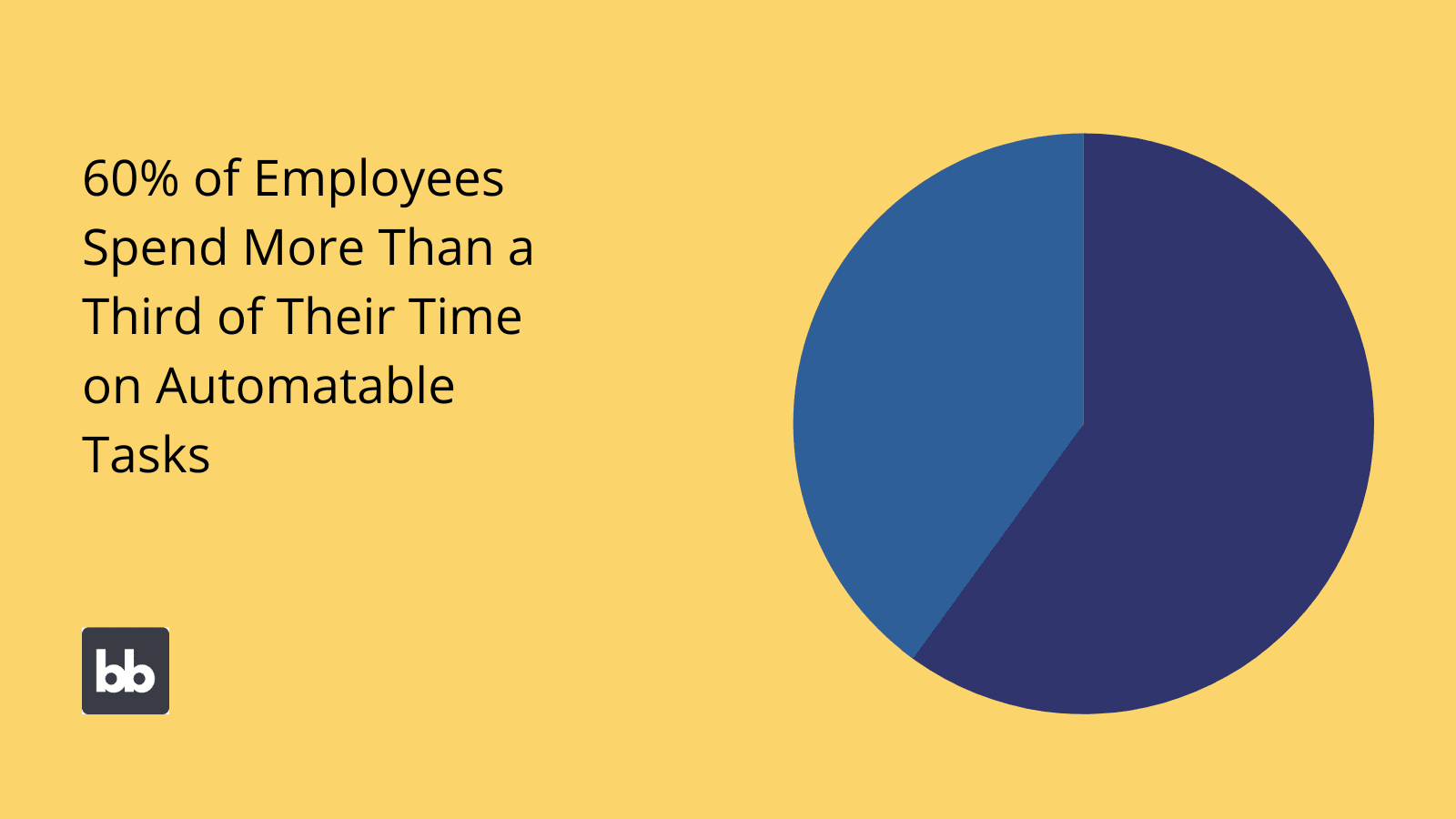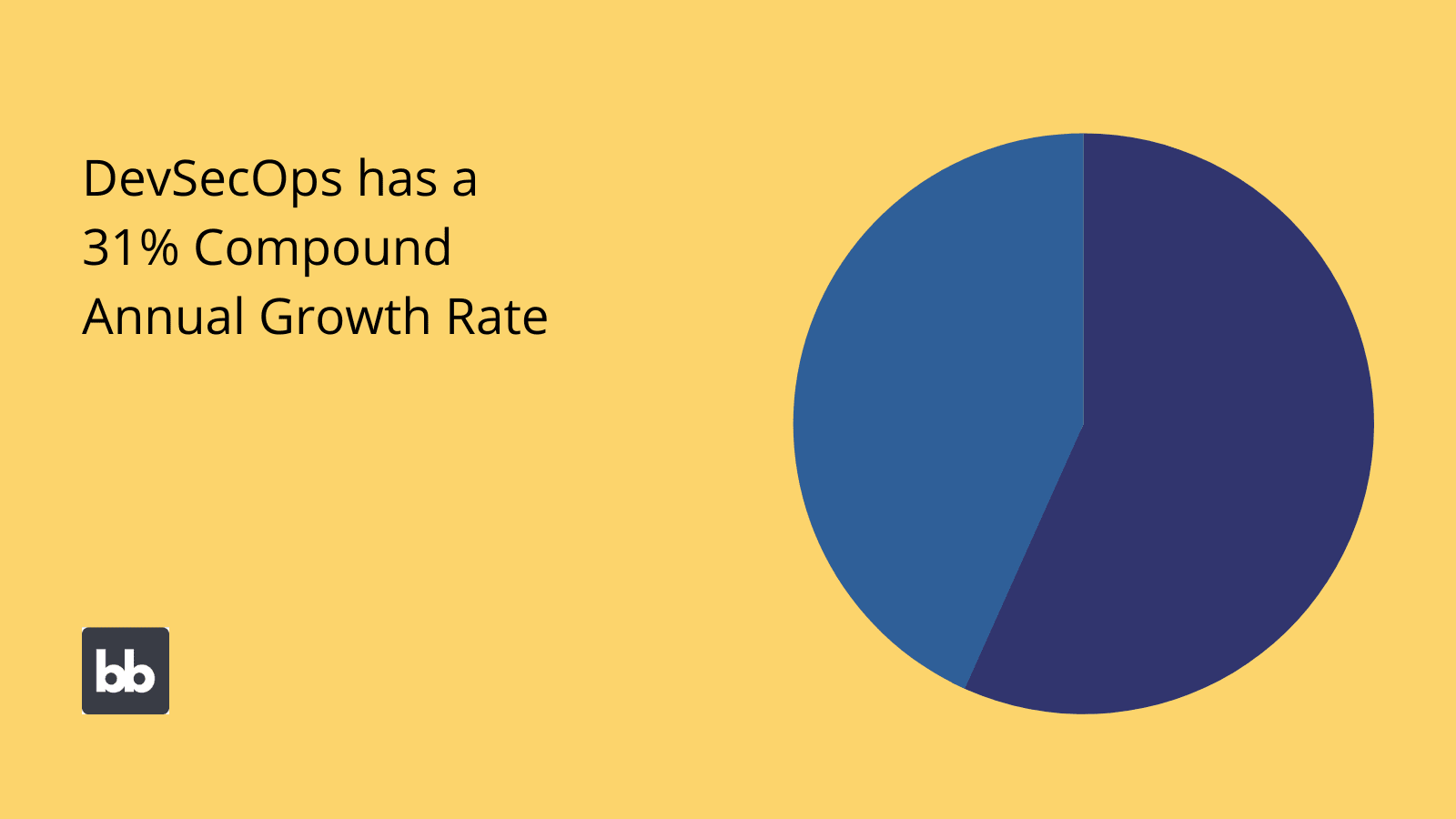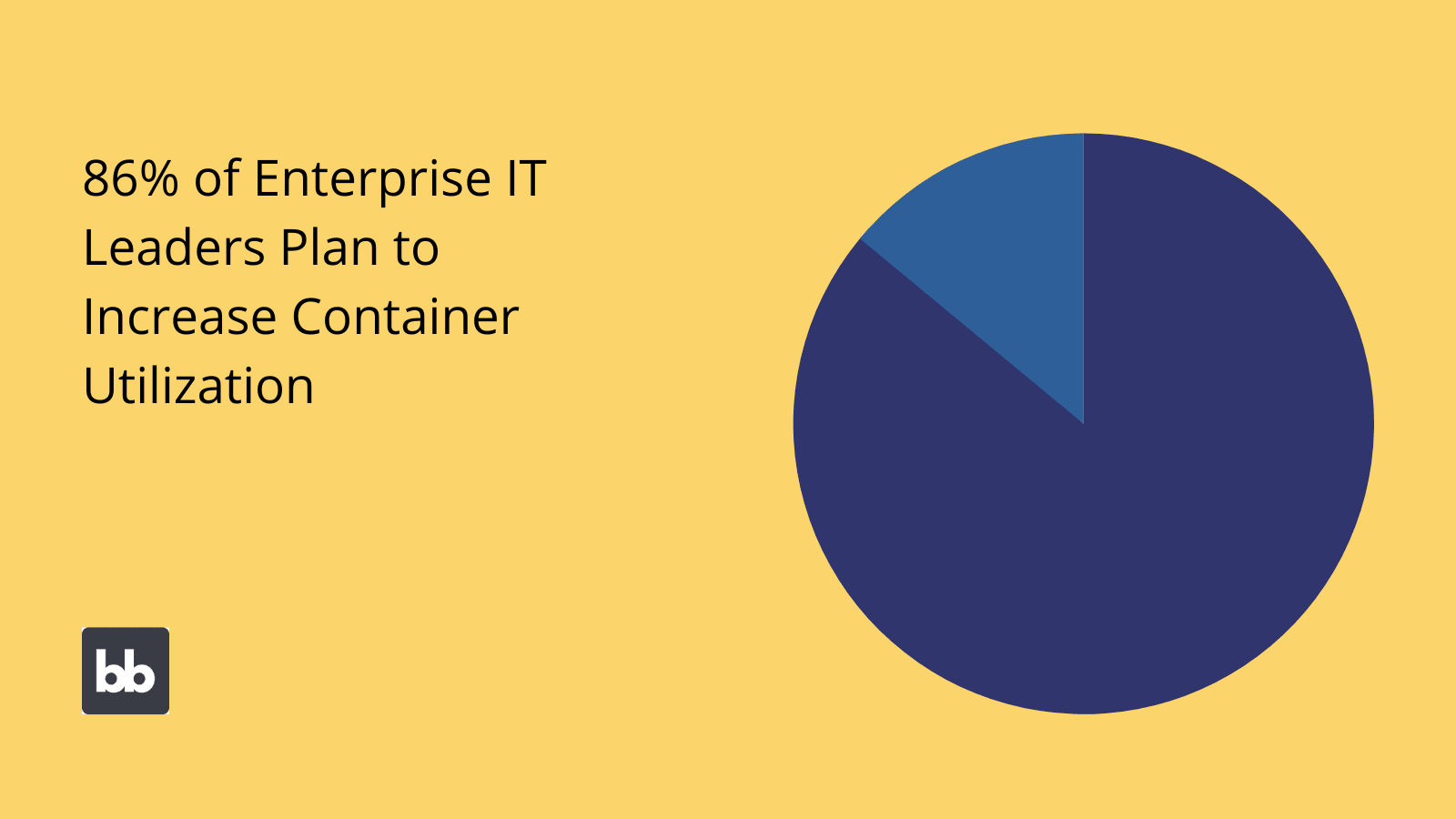9 Enterprise Software Industry Trends for 2024
The way we build tools is constantly changing. New technologies, emergent risks, and external economic factors have always influenced business’ decision-making. Today we’re looking at nine enterprise software industry trends for 2023.
But how much changes in a year really? It’s not like we’re all going to wake up on January 1st and completely gut our software stacks, is it?
Unfortunately, it’s even worse than that.
These changes are already on your doorstep. The sooner you begin to reckon with them, the better. After all, adaptation is the key to maintaining competitiveness.
Let’s take a look at where the enterprise software industry is heading over the next year and beyond.
1. The developer shortage isn’t going anywhere
All around the world, businesses are struggling to recruit and retain skilled developers. By 2025, over 15% of development roles will go unfilled worldwide.
Enterprises have a particularly hard time here, on a couple of different fronts. First, there’s the nature of the work.
A lot of developers would rather work for SMEs and start-ups, because they have a perception that they’ll be better paid, to do more engaging work, in a more exciting company.
And, although not an inevitability, there is truth to this.
Secondly, this is compounded by the fact that enterprise IT teams are burdened with greater-than-ever demand for tools and increasingly lengthy development backlogs. There just aren’t enough skilled coders to meet the need for digitalization.
Squaring this circle will be the top priority for IT leaders in 2023 and beyond.

Take a look at our ultimate guide to enterprise software development .
2. Economic shocks are impacting IT budgets
Similarly, external factors are going to play a huge role in enterprise IT strategy in 2023. There’s no getting around the fact that we’re in a difficult economy. Pandemic recovery, global supply shocks, and an inflation crisis are all squeezing budgets.
This is actually the root of many of the top enterprise software industry trends for the coming months and years - or at least a contributing factor.
So what does this mean in practical terms?
Essentially, we need to get used to doing more with less. Economic troubles are feeding an increase in demand for digital transformation, across all business verticals. At the same time, budgets are shrinking.
As we’ll see, enterprise IT teams are turning to several strategies to help weather this storm.
3. Demand for automation is still growing
It’s hard to describe automation as an industry trend at this point. Realistically, it’s just the daily reality of operating a business. What is worth thinking about though is how we can manage the ever-growing demand for automation in the context we’ve already described.
The fact remains that automation remains underutilized across all sectors. Again, current market pressures accelerate the need for automation in the workplace, but they also shift its character.
One way we can think about this is that automation is increasingly an embedded business norm. Rather than being implemented from above, businesses increasingly seek to democratize automation.
So, we might increasingly empower non-developers to solve problems with automation, independently of the IT department. Of course, we can’t give them free rein.
Check out our guide to citizen development governance for more information.

(McKinsey )
4. Leaders want transformation agility
Unfortunately, at a time when development backlogs are longer than ever, departmental leadership expects more agility from IT teams. After all, they’re under much the same pressures that IT leaders are.
The name of the game is lean digital transformation.
This means eliminating, changing, or improving any element of a process that doesn’t add value. This is an important pivot away from more maximalist approaches to digital transformation.
The key is focusing on the areas where digitalization will offer the most improvement with the least intervention. For example, by specifically targeting individual tasks that are easily automated, such as discrete administrative actions.
5. Low-code will gain even more traction
Low-code development has been on the rise for a long time now, but 2023 will undoubtedly be the biggest year yet for this enterprise software industry trend. The low-code industry has a CAGR of over 26%.
It’s likely that, with the market as it is currently and demand for development skills outstripping supply, low-code will play an ever greater role in internal development projects.
The value proposition here is a natural fit for the problems facing enterprise IT teams.
Low-code platforms are built on the premise that too much development time is spent on relatively simple, even menial tasks. Therefore, one hugely effective strategy for dealing with backlogs is to boost the speed that you can output simple solutions.
For example, it’s normal or, at least accepted as normal, for enterprise development teams to spend huge proportions of their time on repetitive projects, like producing CRUD apps for various data sets.
We’ll see how Budibase is transforming the way enterprises build internal tools a little bit later.
6. Progressive web apps will come to the fore
This is another example of how squeezed development resources, along with new technologies, are having a concrete impact on the way that large organizations build tools. We often need to support desktop and mobile users equally these days.
However, building and maintaining multiple platform-native versions of the same solution is unviable. The financial burden is simply too hard to justify.
PWAs are a pretty elegant solution to this problem. The idea here is to bring the kinds of power and UX that would normally be the reserve of native apps to browser-based tools.
So what exactly is a progressive web app?
Essentially, a web application that works seamlessly across devices, circumventing the need for distribution through native application stores. Generally, we’d also expect a high degree of compatibility with native hardware, like phone cameras, as well as offline functionality.
7. Increasing interest in DevSecOps
Interest in DevSecOps is an enterprise software industry trend that’s quickly becoming a part of the mainstream. For the uninitiated, this is a framework that positions security as a shared concern across all actors within software development life cycles.
As you probably already gathered, the name is a contraction of development, security, and operations. The idea is to create a symbiotic relationship between these three disciplines, by focusing on implementing transparent security practices, as early in SDLCs as possible.
This can be as simple as leveraging IDEs with specific built-in security features.
Obviously, the need for security must be balanced with the need for developers to have fast, efficient tools at their disposal.
As such, DevSecOps is equal parts a cultural shift as an impetus to seek out new tools and automated processes within enterprise SDLCs.

(DevSecOps )
8. Demand for microapps will increase
Microapps are an interesting prospect. As a straightforward definition, these are tools that are built to do just one single thing. For instance, you might have a lightweight application that’s used for employees to update their details across multiple systems.
This is a stark shift in the way that businesses design systems.
The upside is that when you build an ecosystem of microapps rather than a single monolithic system, you can adaptively solve problems, much faster. We can also offer a much greater degree of continuity since one microapp failing is less likely to disrupt the wider system.
However, successfully implementing a microapps architecture isn’t as straightforward as you might initially think. We still need to about how we can create intuitive, efficient user experiences across our entire software stack.
For example, with global theming and prioritizing recognition over recall to minimize training burdens. Take a look at our guide to enterprise app UI design for more information on how this works in practice.
Check out our guide to enterprise software industry trends .
9. Containerization
Containerization is another technologically-driven enterprise software industry trend that will come to the fore in 2023. This is a seachange in the way we develop and deploy tools. Containerization means bundling apps into isolated user spaces, while still sharing an OS.
All of the files that an application needs to run are included in its container, much like with a virtual machine. Containerized apps are therefore highly portable and can be easily run on different kinds of infrastructure, without refactoring.

(Capital One )
So why is this an enterprise software industry trend?
There are a couple of different factors at play here. One is that the number and quality of container solutions have improved markedly in the last few years. Tools like Docker and the open-source Kubernetes make it easy to create highly scalable, automated configurations.
Then there’s the need for containerized applications in an increasingly remote working environment. As businesses need to safeguard security and service continuity across distributed workforces, containerization has come to the fore.
Plus, they require lower technical overheads and are cheaper to implement than traditional VMs.
Check out our guide to enterprise app development.
Budibase is a developer’s best friend
At Budibase, we’re proud to be at the forefront of the low-code revolution. Modern enterprises all over the world choose Budibase to build secure, custom applications, in a fraction of the time.
Our mission is to transform the way businesses build internal tools, forever.
Let’s take a look at why so many enterprises are deciding that Budibase is a developer’s best friend.

Our open-source, low-code platform
Budibase is built for speed, without compromising on functionality. With an intuitive design interface, easy data modeling, custom automations, and optional self-hosting, Budibase is with you from ideation to deployment.
You can even create fully working CRUD apps in a matter of seconds, with our handy autogeneration tools.
Check out our product page for more information.
Optional self-hosting
Enterprises love Budibase because they can host our platform and the tools they build in it, wherever they want. Use Docker, Digital Ocean, Kubernetes, and more to deploy Budibase to your own infrastructure, locally or in the cloud.
Self-hosting Budibase is the perfect solution for large organizations that need to output new tools quickly, without compromising on security.
External data support
Budibase leads the pack for data support. Alongside our built-in database, we offer dedicated connectors for MySQL, MSSQL, Postgres, Airtable, Couch, Mongo, Oracle, S3, REST, and more.
With minimal configuration, you can create efficient, modern forms, GUIs, CRUD tools, or dashboards to manage just about any existing business data.
Custom plug-ins
Budibase is number one for extensibility. We’ve launched custom components and data sources, to empower our users to make Budibase their own. Build your own extensions using the Budibase CLI, and use them across any of your tools.
Whether your need to query a legacy data source or build components for niche fringe cases, Budibase is here to support you.
Check out our plug-ins documentation for more information.
Workflow automation
We offer a fully-packed automation builder UI. Use our flow-chart-based interface to trigger actions based on user inputs, system conditions, or external triggers. We also offer third-party integrations with WebHooks, Zapier, REST, and our internal API.
Use Budibase to trigger events in external tools, or vice versa, for seamlessly automated workflows.
Usage-based pricing
Our pricing is built on the idea that businesses should only pay for what they use. We’ve built a day-pass model, so you’ll never have to pay for inactive users. Plus, with our open-source model, you can always build unlimited self-hosted apps, for free.
Check out our pricing page to find out more.
Free, deployable app templates
We’re so confident in what Budibase can do that we’ve built over 50 free, deployable app templates to help you get started. Use any one of them as a working solution, or as a jumping-off point for your own custom build.
To start using Budibase for free, sign up today.